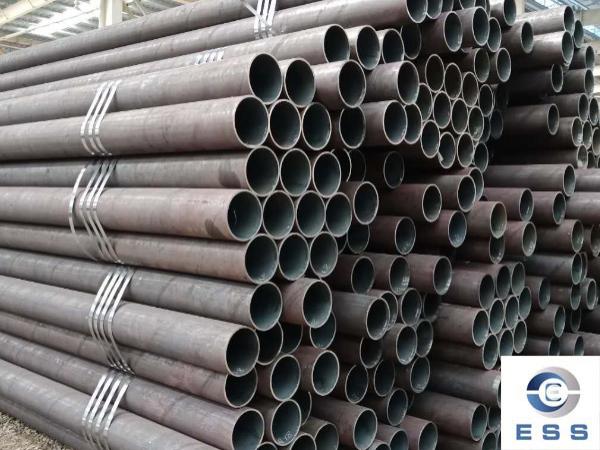What is the first step before pickling carbon steel pipe?
For carbon steel pipes (CS pipes), they should be degreased first and then pickled, because grease is not soluble in acid solution. If pickling is performed first, neither the oil stain nor the rust covered by the oil stain can be removed.

Carbon seamless steel pipe degreasing and pickling method:
At present, the tank immersion method is mostly used in construction. During immersion, the liquid level exceeds the outer surface of the pipe by more than 50mm. Since oxygen pipelines need to be degreased, pickled, and passivated, four storage tanks are generally made according to the actual diameter of the pipelines used. That is, degreasing tank, pickling tank, neutralizing tank and passivation tank. The oxygen pipeline oil removal and pickling process is: degreasing → water washing → pickling → water washing → neutralization → passivation → water washing → drying.
1. Skim
The formula of the degreasing liquid is as follows: Each liter of solution contains 20g-30g of sodium hydroxide, 35g-50g of sodium nitrate, and 3g-5g of sodium silicate. The operating process requirements are: the liquid temperature is 70°C to 80°C, and the soaking time is determined through testing methods based on the amount of oil stain on the surface of the pipe, which is generally about 10min to 40min. The heating method can be steam. Degreased areas should be inspected using one of the following methods. (1) Wipe the surface of the degreasing part with clean and dry white filter paper. If there is no trace of grease on the paper, it is qualified. (2) Use 100% camphor below 1mm to check the condensation water, rinse the condensation water, and keep the rotation qualified. (3) Use ultraviolet light with a wavelength of 3200-3800 Angstroms to check the surface of the degreasing part, and the oil-free fluorescence is qualified. After degreasing, the oil on the surface of the pipe can be removed.
2. Rinse with water
Rinse with clean water at a pressure of 0.8MPa.
3. Pickling
Pickling uses acidic solution to remove scale and rust on the surface of CS seamless pipes. Iron oxides (Fe3O4, Fe2O3, FeO, etc.) such as scale and rust react with the acid solution to form salts, which are dissolved in the acid solution and removed. The most commonly used pickles are sulfuric acid and hydrochloric acid. The formula of sulfuric acid solution is: the concentration of sulfuric acid solution is 5% to 10%. The operating process requirements are: temperature 60℃~80℃, soaking for 5min~20min. The formula of the hydrochloric acid solution is: the concentration of the hydrochloric acid solution is 5% to 20%. The operating process requirements are: temperature 20℃~50℃, soaking for 5min~20min. After the pipe is pickled, check whether the surface rust is removed and whether the exposed metallic luster is acceptable.
4. Rinse with water
Rinse with clean water at a pressure of 0.8MPa.
5. Neutralize
The formula of the neutralizing solution is: dilute with NH4OH to a solution with a pH value of 10-11. The operating process requirements are: soak at room temperature for 3 minutes.
6. Passivation
After pickling, water washing, and rinsing, the metal surface is very clean, very activated, and extremely easy to corrode. Therefore, passivation treatment must be carried out immediately to form a protective film on the cleaned metal surface to slow down corrosion. The passivation solution formula is: NaNO2 concentration is 8% to 10%; NH4OH concentration is 2%. The operating process requirements are: soak at room temperature for 10 minutes.
7. Rinse with water
Rinse with pure water at a pressure of 0.8MPa.
8. Drying
Clean, oil-free dry air or nitrogen must be used for drying.
9. Check
Wipe with white filter paper and check. If there are no traces of grease on the paper, it is qualified. After passing the inspection, seal both ends of the pipe with plastic sheeting and tape.
The inner wall of the carbon steel pipe treated by the above method is clean and bright, and can remain rust-free for about 2 months; if it is well preserved, the time can be extended. The above method can also be used for carbon steel pipe fittings.













 Eastern Steel Manufacturing Co.,Ltd not only improve product production and sales services, but also provide additional value-added services. As long as you need, we can complete your specific needs together.
Eastern Steel Manufacturing Co.,Ltd not only improve product production and sales services, but also provide additional value-added services. As long as you need, we can complete your specific needs together.










